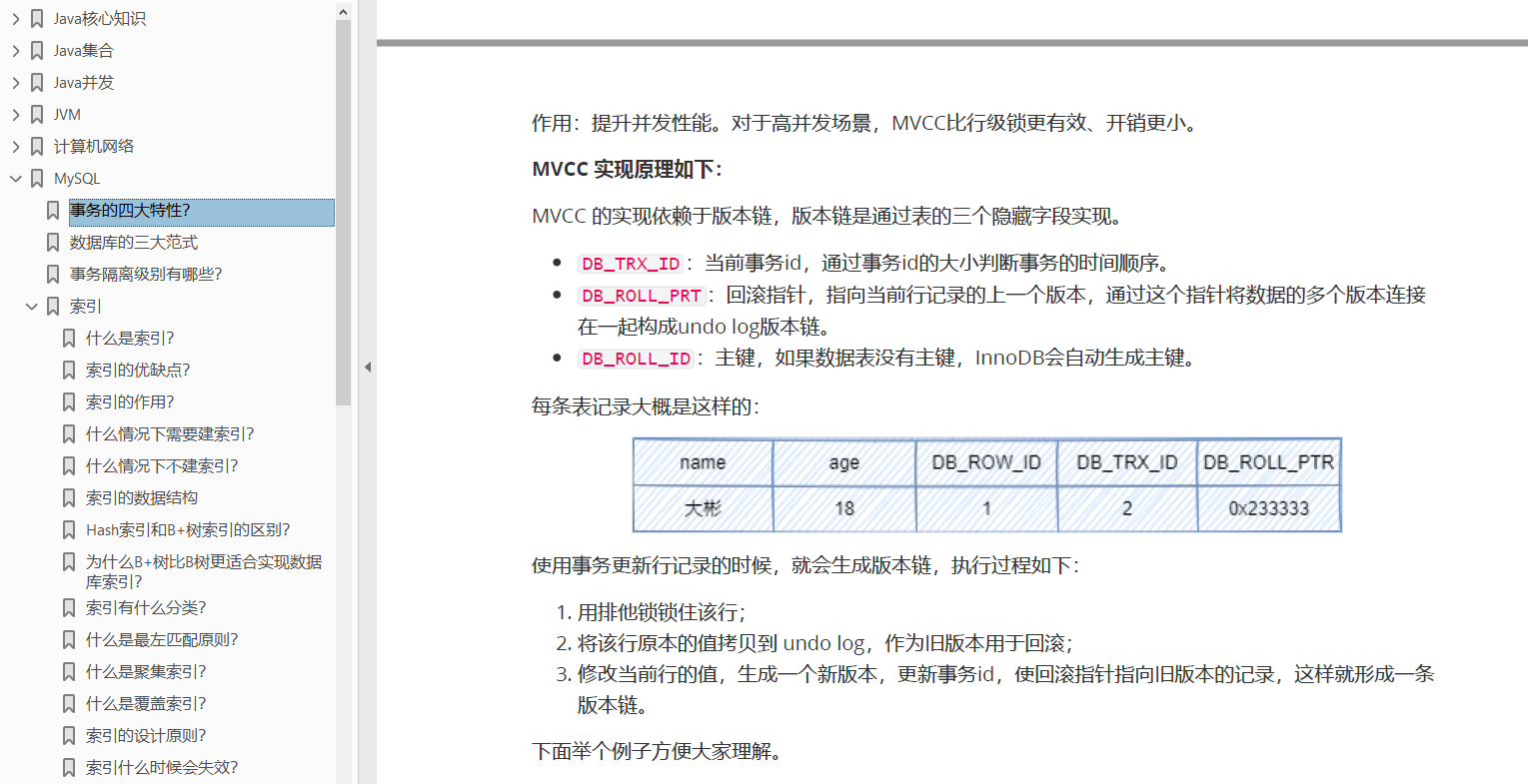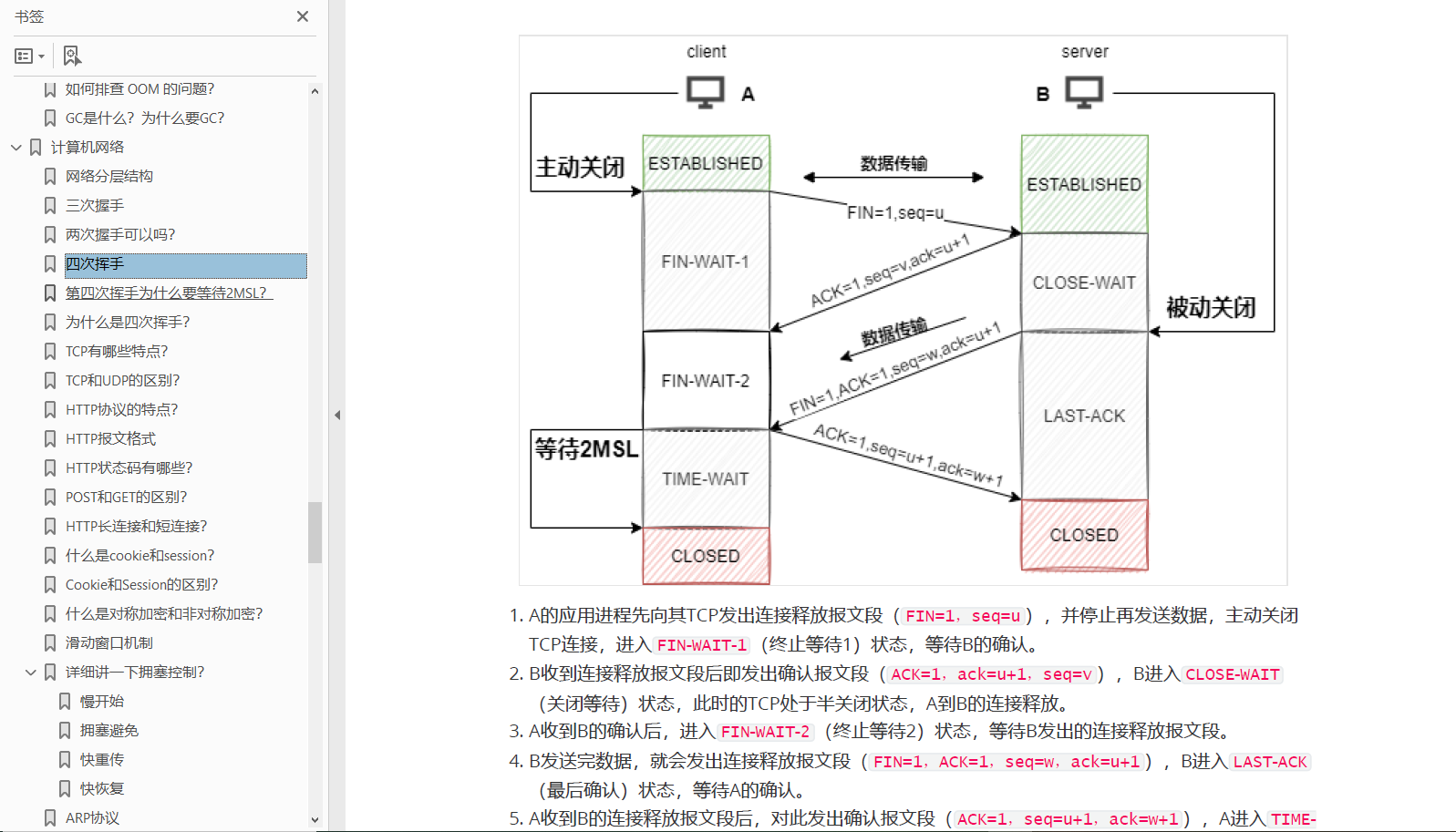正文
doCreateBean() 主要用于完成 bean 的创建和初始化工作,我们可以将其分为四个过程:
createBeanInstance()实例化 beanpopulateBean()属性填充- 循环依赖的处理
initializeBean()初始化 bean
第一个过程实例化 bean在前面一篇博客中已经分析完了,这篇博客开始分析 属性填充,也就是 populateBean()
protected void populateBean(String beanName, RootBeanDefinition mbd, BeanWrapper bw) {
PropertyValues pvs = mbd.getPropertyValues();
if (bw == null) {
if (!pvs.isEmpty()) {
throw new BeanCreationException(
mbd.getResourceDescription(), beanName, "Cannot apply property values to null instance");
}
else {
// Skip property population phase for null instance.
return;
}
}
// Give any InstantiationAwareBeanPostProcessors the opportunity to modify the
// state of the bean before properties are set. This can be used, for example,
// to support styles of field injection.
boolean continueWithPropertyPopulation = true;
if (!mbd.isSynthetic() && hasInstantiationAwareBeanPostProcessors()) {
for (BeanPostProcessor bp : getBeanPostProcessors()) {
if (bp instanceof InstantiationAwareBeanPostProcessor) {
InstantiationAwareBeanPostProcessor ibp = (InstantiationAwareBeanPostProcessor) bp;
//返回值为是否继续填充bean
if (!ibp.postProcessAfterInstantiation(bw.getWrappedInstance(), beanName)) {
continueWithPropertyPopulation = false;
break;
}
}
}
}
//如果后处理器发出停止填充命令则终止后续的执行
if (!continueWithPropertyPopulation) {
return;
}
if (mbd.getResolvedAutowireMode() == RootBeanDefinition.AUTOWIRE_BY_NAME ||
mbd.getResolvedAutowireMode() == RootBeanDefinition.AUTOWIRE_BY_TYPE) {
MutablePropertyValues newPvs = new MutablePropertyValues(pvs);
// Add property values based on autowire by name if applicable.
//根据名称自动注入
if (mbd.getResolvedAutowireMode() == RootBeanDefinition.AUTOWIRE_BY_NAME) {
autowireByName(beanName, mbd, bw, newPvs);
}
// Add property values based on autowire by type if applicable.
//根据类型自动注入
if (mbd.getResolvedAutowireMode() == RootBeanDefinition.AUTOWIRE_BY_TYPE) {
autowireByType(beanName, mbd, bw, newPvs);
}
pvs = newPvs;
}
//后处理器已经初始化
boolean hasInstAwareBpps = hasInstantiationAwareBeanPostProcessors();
//需要依赖检查
boolean needsDepCheck = (mbd.getDependencyCheck() != RootBeanDefinition.DEPENDENCY_CHECK_NONE);
if (hasInstAwareBpps || needsDepCheck) {
PropertyDescriptor[] filteredPds = filterPropertyDescriptorsForDependencyCheck(bw, mbd.allowCaching);
if (hasInstAwareBpps) {
for (BeanPostProcessor bp : getBeanPostProcessors()) {
if (bp instanceof InstantiationAwareBeanPostProcessor) {
InstantiationAwareBeanPostProcessor ibp = (InstantiationAwareBeanPostProcessor) bp;
//对所有需要依赖检查的属性进行后处理
pvs = ibp.postProcessPropertyValues(pvs, filteredPds, bw.getWrappedInstance(), beanName);
if (pvs == null) {
return;
}
}
}
}
if (needsDepCheck) {
//依赖检查,对应depends-on属性,3.0已经弃用此属性
checkDependencies(beanName, mbd, filteredPds, pvs);
}
}
//将属性应用到bean中
//将所有ProtertyValues中的属性填充至BeanWrapper中。
applyPropertyValues(beanName, mbd, bw, pvs);
}
我们来分析下populateBean的流程:
(1)首先进行属性是否为空的判断
(2)通过调用InstantiationAwareBeanPostProcessor的postProcessAfterInstantiation(bw.getWrappedInstance(), beanName)方法来控制程序是否继续进行属性填充
(3)根据注入类型(byName/byType)提取依赖的bean,并统一存入PropertyValues中
(4)应用InstantiationAwareBeanPostProcessor的postProcessPropertyValues(pvs, filteredPds, bw.getWrappedInstance(), beanName)方法,对属性获取完毕填充前的再次处理,典型的应用是RequiredAnnotationBeanPostProcesser类中对属性的验证
(5)将所有的PropertyValues中的属性填充至BeanWrapper中
上面步骤中有几个地方是我们比较感兴趣的,它们分别是依赖注入(autowireByName/autowireByType)以及属性填充,接下来进一步分析这几个功能的实现细节
分享一份大彬精心整理的大厂面试手册,包含计算机基础、Java基础、多线程、JVM、数据库、Redis、Spring、Mybatis、SpringMVC、SpringBoot、分布式、微服务、设计模式、架构、校招社招分享等高频面试题,非常实用,有小伙伴靠着这份手册拿过字节offer~
需要的小伙伴可以自行下载:
自动注入
Spring 会根据注入类型( byName / byType )的不同,调用不同的方法(autowireByName() / autowireByType())来注入属性值。
autowireByName()
protected void autowireByName(
String beanName, AbstractBeanDefinition mbd, BeanWrapper bw, MutablePropertyValues pvs) {
// 获取 Bean 对象中非简单属性
String[] propertyNames = unsatisfiedNonSimpleProperties(mbd, bw);
for (String propertyName : propertyNames) {
// 如果容器中包含指定名称的 bean,则将该 bean 注入到 bean中
if (containsBean(propertyName)) {
// 递归初始化相关 bean
Object bean = getBean(propertyName);
// 为指定名称的属性赋予属性值
pvs.add(propertyName, bean);
// 属性依赖注入
registerDependentBean(propertyName, beanName);
if (logger.isDebugEnabled()) {
logger.debug("Added autowiring by name from bean name '" + beanName +
"' via property '" + propertyName + "' to bean named '" + propertyName + "'");
}
}
else {
if (logger.isTraceEnabled()) {
logger.trace("Not autowiring property '" + propertyName + "' of bean '" + beanName +
"' by name: no matching bean found");
}
}
}
}
该方法逻辑很简单,获取该 bean 的非简单属性,什么叫做非简单属性呢?就是类型为对象类型的属性,但是这里并不是将所有的对象类型都都会找到,比如 8 个原始类型,String 类型 ,Number类型、Date类型、URL类型、URI类型等都会被忽略,如下:
protected String[] unsatisfiedNonSimpleProperties(AbstractBeanDefinition mbd, BeanWrapper bw) {
Set<String> result = new TreeSet<>();
PropertyValues pvs = mbd.getPropertyValues();
PropertyDescriptor[] pds = bw.getPropertyDescriptors();
for (PropertyDescriptor pd : pds) {
if (pd.getWriteMethod() != null && !isExcludedFromDependencyCheck(pd) && !pvs.contains(pd.getName()) &&
!BeanUtils.isSimpleProperty(pd.getPropertyType())) {
result.add(pd.getName());
}
}
return StringUtils.toStringArray(result);
}
这里获取的就是需要依赖注入的属性。
autowireByName()函数的功能就是根据传入的参数中的pvs中找出已经加载的bean,并递归实例化,然后加入到pvs中
autowireByType
autowireByType与autowireByName对于我们理解与使用来说复杂程度相似,但是实现功能的复杂度却不一样,我们看下方法代码:
protected void autowireByType(
String beanName, AbstractBeanDefinition mbd, BeanWrapper bw, MutablePropertyValues pvs) {
TypeConverter converter = getCustomTypeConverter();
if (converter == null) {
converter = bw;
}
Set<String> autowiredBeanNames = new LinkedHashSet<String>(4);
//寻找bw中需要依赖注入的属性
String[] propertyNames = unsatisfiedNonSimpleProperties(mbd, bw);
for (String propertyName : propertyNames) {
try {
PropertyDescriptor pd = bw.getPropertyDescriptor(propertyName);
// Don't try autowiring by type for type Object: never makes sense,
// even if it technically is a unsatisfied, non-simple property.
if (!Object.class.equals(pd.getPropertyType())) {
//探测指定属性的set方法
MethodParameter methodParam = BeanUtils.getWriteMethodParameter(pd);
// Do not allow eager init for type matching in case of a prioritized post-processor.
boolean eager = !PriorityOrdered.class.isAssignableFrom(bw.getWrappedClass());
DependencyDescriptor desc = new AutowireByTypeDependencyDescriptor(methodParam, eager);
//解析指定beanName的属性所匹配的值,并把解析到的属性名称存储在autowiredBeanNames中,
Object autowiredArgument = resolveDependency(desc, beanName, autowiredBeanNames, converter);
if (autowiredArgument != null) {
pvs.add(propertyName, autowiredArgument);
}
for (String autowiredBeanName : autowiredBeanNames) {
//注册依赖
registerDependentBean(autowiredBeanName, beanName);
if (logger.isDebugEnabled()) {
logger.debug("Autowiring by type from bean name '" + beanName + "' via property '" +
propertyName + "' to bean named '" + autowiredBeanName + "'");
}
}
autowiredBeanNames.clear();
}
}
catch (BeansException ex) {
throw new UnsatisfiedDependencyException(mbd.getResourceDescription(), beanName, propertyName, ex);
}
}
}
根据名称第一步与根据属性第一步都是寻找bw中需要依赖注入的属性,然后遍历这些属性并寻找类型匹配的bean,其中最复杂就是寻找类型匹配的bean。spring中提供了对集合的类型注入支持,如使用如下注解方式:
@Autowired
private List<Test> tests;
这种方式spring会把所有与Test匹配的类型找出来并注入到tests属性中,正是由于这一因素,所以在autowireByType函数,新建了局部遍历autowireBeanNames,用于存储所有依赖的bean,如果只是对非集合类的属性注入来说,此属性并无用处。
对于寻找类型匹配的逻辑实现是封装在了resolveDependency函数中,其实现如下:
public Object resolveDependency(DependencyDescriptor descriptor, String beanName, Set<String> autowiredBeanNames, TypeConverter typeConverter) throws BeansException {
descriptor.initParameterNameDiscovery(getParameterNameDiscoverer());
if (descriptor.getDependencyType().equals(ObjectFactory.class)) {
//ObjectFactory类注入的特殊处理
return new DependencyObjectFactory(descriptor, beanName);
}
else if (descriptor.getDependencyType().equals(javaxInjectProviderClass)) {
//javaxInjectProviderClass类注入的特殊处理
return new DependencyProviderFactory().createDependencyProvider(descriptor, beanName);
}
else {
//通用处理逻辑
return doResolveDependency(descriptor, descriptor.getDependencyType(), beanName, autowiredBeanNames, typeConverter);
}
}
protected Object doResolveDependency(DependencyDescriptor descriptor, Class<?> type, String beanName,
Set<String> autowiredBeanNames, TypeConverter typeConverter) throws BeansException {
/*
* 用于支持Spring中新增的注解@Value
*/
Object value = getAutowireCandidateResolver().getSuggestedValue(descriptor);
if (value != null) {
if (value instanceof String) {
String strVal = resolveEmbeddedValue((String) value);
BeanDefinition bd = (beanName != null && containsBean(beanName) ? getMergedBeanDefinition(beanName) : null);
value = evaluateBeanDefinitionString(strVal, bd);
}
TypeConverter converter = (typeConverter != null ? typeConverter : getTypeConverter());
return (descriptor.getField() != null ?
converter.convertIfNecessary(value, type, descriptor.getField()) :
converter.convertIfNecessary(value, type, descriptor.getMethodParameter()));
}
//如果解析器没有成功解析,则需要考虑各种情况
//属性是数组类型
if (type.isArray()) {
Class<?> componentType = type.getComponentType();
//根据属性类型找到beanFactory中所有类型的匹配bean,
//返回值的构成为:key=匹配的beanName,value=beanName对应的实例化后的bean(通过getBean(beanName)返回)
Map<String, Object> matchingBeans = findAutowireCandidates(beanName, componentType, descriptor);
if (matchingBeans.isEmpty()) {
//如果autowire的require属性为true而找到的匹配项却为空则只能抛出异常
if (descriptor.isRequired()) {
raiseNoSuchBeanDefinitionException(componentType, "array of " + componentType.getName(), descriptor);
}
return null;
}
if (autowiredBeanNames != null) {
autowiredBeanNames.addAll(matchingBeans.keySet());
}
TypeConverter converter = (typeConverter != null ? typeConverter : getTypeConverter());
//通过转换器将bean的值转换为对应的type类型
return converter.convertIfNecessary(matchingBeans.values(), type);
}
//属性是Collection类型
else if (Collection.class.isAssignableFrom(type) && type.isInterface()) {
Class<?> elementType = descriptor.getCollectionType();
if (elementType == null) {
if (descriptor.isRequired()) {
throw new FatalBeanException("No element type declared for collection [" + type.getName() + "]");
}
return null;
}
Map<String, Object> matchingBeans = findAutowireCandidates(beanName, elementType, descriptor);
if (matchingBeans.isEmpty()) {
if (descriptor.isRequired()) {
raiseNoSuchBeanDefinitionException(elementType, "collection of " + elementType.getName(), descriptor);
}
return null;
}
if (autowiredBeanNames != null) {
autowiredBeanNames.addAll(matchingBeans.keySet());
}
TypeConverter converter = (typeConverter != null ? typeConverter : getTypeConverter());
return converter.convertIfNecessary(matchingBeans.values(), type);
}
//属性是Map类型
else if (Map.class.isAssignableFrom(type) && type.isInterface()) {
Class<?> keyType = descriptor.getMapKeyType();
if (keyType == null || !String.class.isAssignableFrom(keyType)) {
if (descriptor.isRequired()) {
throw new FatalBeanException("Key type [" + keyType + "] of map [" + type.getName() +
"] must be assignable to [java.lang.String]");
}
return null;
}
Class<?> valueType = descriptor.getMapValueType();
if (valueType == null) {
if (descriptor.isRequired()) {
throw new FatalBeanException("No value type declared for map [" + type.getName() + "]");
}
return null;
}
Map<String, Object> matchingBeans = findAutowireCandidates(beanName, valueType, descriptor);
if (matchingBeans.isEmpty()) {
if (descriptor.isRequired()) {
raiseNoSuchBeanDefinitionException(valueType, "map with value type " + valueType.getName(), descriptor);
}
return null;
}
if (autowiredBeanNames != null) {
autowiredBeanNames.addAll(matchingBeans.keySet());
}
return matchingBeans;
}
else {
Map<String, Object> matchingBeans = findAutowireCandidates(beanName, type, descriptor);
if (matchingBeans.isEmpty()) {
if (descriptor.isRequired()) {
raiseNoSuchBeanDefinitionException(type, "", descriptor);
}
return null;
}
if (matchingBeans.size() > 1) {
String primaryBeanName = determinePrimaryCandidate(matchingBeans, descriptor);
if (primaryBeanName == null) {
throw new NoUniqueBeanDefinitionException(type, matchingBeans.keySet());
}
if (autowiredBeanNames != null) {
autowiredBeanNames.add(primaryBeanName);
}
return matchingBeans.get(primaryBeanName);
}
// We have exactly one match.
Map.Entry<String, Object> entry = matchingBeans.entrySet().iterator().next();
if (autowiredBeanNames != null) {
autowiredBeanNames.add(entry.getKey());
}
//已经确定只有一个匹配项
return entry.getValue();
}
}
主要就是通过Type从BeanFactory中找到对应的benaName,然后通过getBean获取实例
protected Map<String, Object> findAutowireCandidates(
@Nullable String beanName, Class<?> requiredType, DependencyDescriptor descriptor) {
//在BeanFactory找到所有Type类型的beanName
String[] candidateNames = BeanFactoryUtils.beanNamesForTypeIncludingAncestors(
this, requiredType, true, descriptor.isEager());
Map<String, Object> result = new LinkedHashMap<>(candidateNames.length);
//遍历所有的beanName,通过getBean获取
for (String candidate : candidateNames) {
if (!isSelfReference(beanName, candidate) && isAutowireCandidate(candidate, descriptor)) {
//
addCandidateEntry(result, candidate, descriptor, requiredType);
}
}
return result;
}
private void addCandidateEntry(Map<String, Object> candidates, String candidateName,
DependencyDescriptor descriptor, Class<?> requiredType) {
Object beanInstance = descriptor.resolveCandidate(candidateName, requiredType, this);
if (!(beanInstance instanceof NullBean)) {
candidates.put(candidateName, beanInstance);
}
}
public Object resolveCandidate(String beanName, Class<?> requiredType, BeanFactory beanFactory)
throws BeansException {
//通过类型找到beanName,然后再找到其实例
return beanFactory.getBean(beanName);
}
applyPropertyValues
程序运行到这里,已经完成了对所有注入属性的获取,但是获取的属性是以PropertyValues形式存在的,还并没有应用到已经实例化的bean中,这一工作是在applyPropertyValues中。继续跟踪到方法体中:
protected void applyPropertyValues(String beanName, BeanDefinition mbd, BeanWrapper bw, PropertyValues pvs) {
if (pvs == null || pvs.isEmpty()) {
return;
}
MutablePropertyValues mpvs = null;
List<PropertyValue> original;
if (System.getSecurityManager() != null) {
if (bw instanceof BeanWrapperImpl) {
((BeanWrapperImpl) bw).setSecurityContext(getAccessControlContext());
}
}
if (pvs instanceof MutablePropertyValues) {
mpvs = (MutablePropertyValues) pvs;
//如果mpvs中的值已经被转换为对应的类型那么可以直接设置到beanwapper中
if (mpvs.isConverted()) {
// Shortcut: use the pre-converted values as-is.
try {
bw.setPropertyValues(mpvs);
return;
}
catch (BeansException ex) {
throw new BeanCreationException(
mbd.getResourceDescription(), beanName, "Error setting property values", ex);
}
}
original = mpvs.getPropertyValueList();
}
else {
//如果pvs并不是使用MutablePropertyValues封装的类型,那么直接使用原始的属性获取方法
original = Arrays.asList(pvs.getPropertyValues());
}
TypeConverter converter = getCustomTypeConverter();
if (converter == null) {
converter = bw;
}
//获取对应的解析器
BeanDefinitionValueResolver valueResolver = new BeanDefinitionValueResolver(this, beanName, mbd, converter);
// Create a deep copy, resolving any references for values.
List<PropertyValue> deepCopy = new ArrayList<PropertyValue>(original.size());
boolean resolveNecessary = false;
//遍历属性,将属性转换为对应类的对应属性的类型
for (PropertyValue pv : original) {
if (pv.isConverted()) {
deepCopy.add(pv);
}
else {
String propertyName = pv.getName();
Object originalValue = pv.getValue();
Object resolvedValue = valueResolver.resolveValueIfNecessary(pv, originalValue);
Object convertedValue = resolvedValue;
boolean convertible = bw.isWritableProperty(propertyName) &&
!PropertyAccessorUtils.isNestedOrIndexedProperty(propertyName);
if (convertible) {
convertedValue = convertForProperty(resolvedValue, propertyName, bw, converter);
}
// Possibly store converted value in merged bean definition,
// in order to avoid re-conversion for every created bean instance.
if (resolvedValue == originalValue) {
if (convertible) {
pv.setConvertedValue(convertedValue);
}
deepCopy.add(pv);
}
else if (convertible && originalValue instanceof TypedStringValue &&
!((TypedStringValue) originalValue).isDynamic() &&
!(convertedValue instanceof Collection || ObjectUtils.isArray(convertedValue))) {
pv.setConvertedValue(convertedValue);
deepCopy.add(pv);
}
else {
resolveNecessary = true;
deepCopy.add(new PropertyValue(pv, convertedValue));
}
}
}
if (mpvs != null && !resolveNecessary) {
mpvs.setConverted();
}
// Set our (possibly massaged) deep copy.
try {
bw.setPropertyValues(new MutablePropertyValues(deepCopy));
}
catch (BeansException ex) {
throw new BeanCreationException(
mbd.getResourceDescription(), beanName, "Error setting property values", ex);
}
}
我们来看看具体的属性赋值过程
public class MyTestBean {
private String name ;
public MyTestBean(String name) {
this.name = name;
}
public MyTestBean() {
}
public String getName() {
return name;
}
public void setName(String name) {
this.name = name;
}
}
<bean id="myTestBean" class="dabin.spring01.MyTestBean">
<property name="name" value="dabin"></property>
</bean>
如上 bw.setPropertyValues 最终都会走到如下方法
@Override
public void setValue(final @Nullable Object value) throws Exception {
//获取writeMethod,也就是我们MyTestBean的setName方法
final Method writeMethod = (this.pd instanceof GenericTypeAwarePropertyDescriptor ?
((GenericTypeAwarePropertyDescriptor) this.pd).getWriteMethodForActualAccess() :
this.pd.getWriteMethod());
if (System.getSecurityManager() != null) {
AccessController.doPrivileged((PrivilegedAction<Object>) () -> {
ReflectionUtils.makeAccessible(writeMethod);
return null;
});
try {
AccessController.doPrivileged((PrivilegedExceptionAction<Object>) () ->
writeMethod.invoke(getWrappedInstance(), value), acc);
}
catch (PrivilegedActionException ex) {
throw ex.getException();
}
}
else {
ReflectionUtils.makeAccessible(writeMethod);
//通过反射调用方法进行赋值
writeMethod.invoke(getWrappedInstance(), value);
}
}
就是利用反射进行调用对象的set方法赋值
至此,doCreateBean() 第二个过程:属性填充 已经分析完成了,下篇分析第三个过程:循环依赖的处理,其实循环依赖并不仅仅只是在 doCreateBean() 中处理,其实在整个加载 bean 的过程中都有涉及,所以下篇内容并不仅仅只局限于 doCreateBean()。

